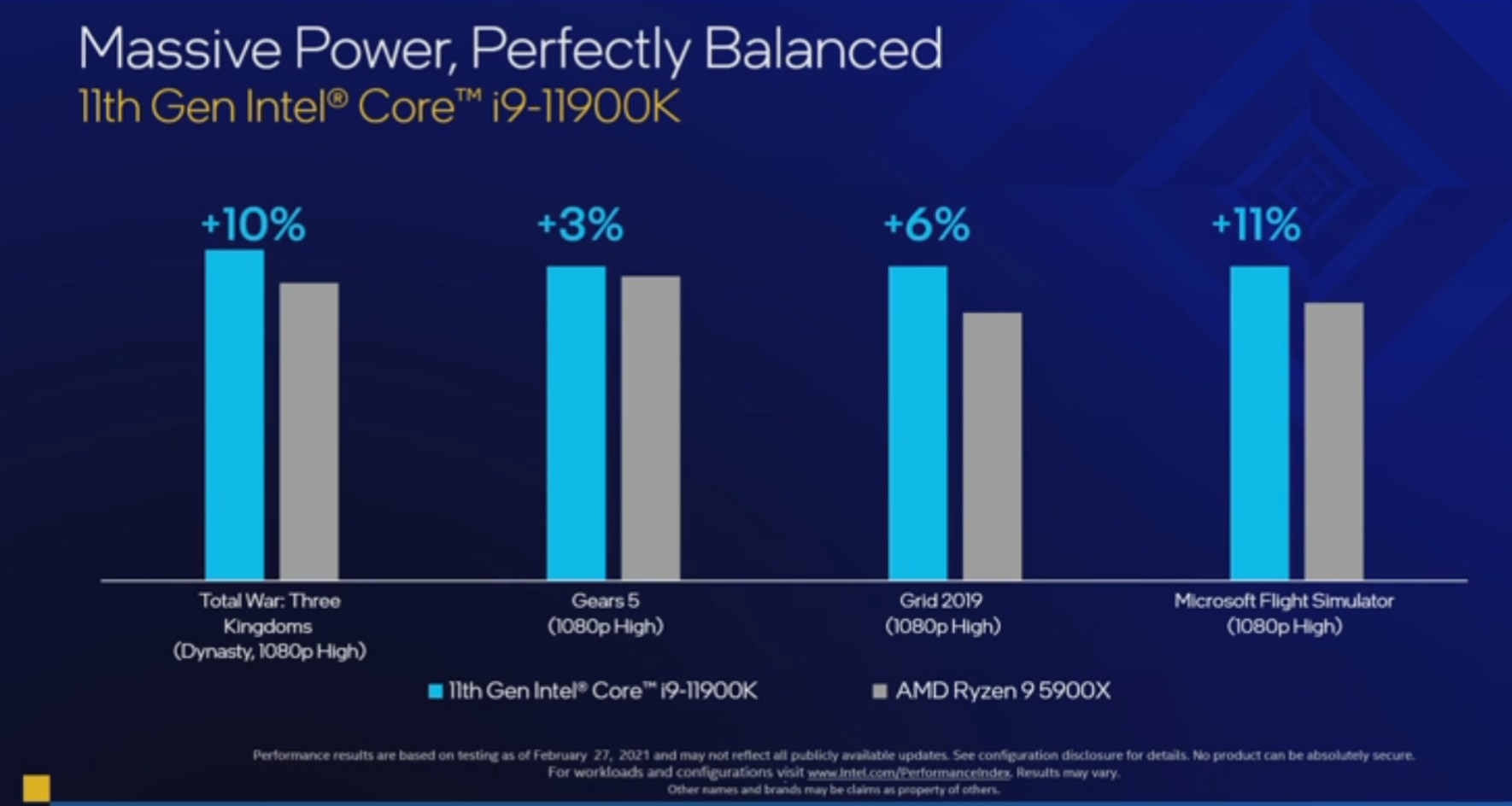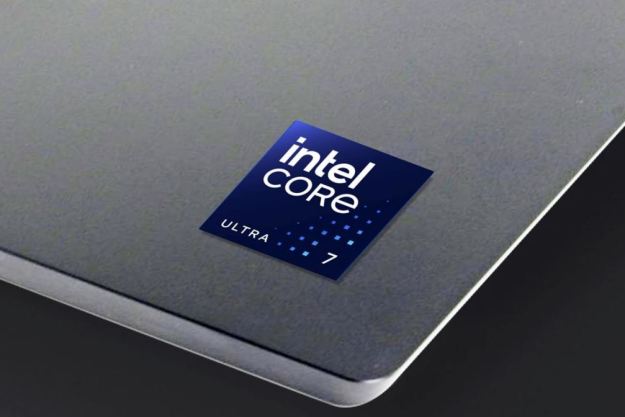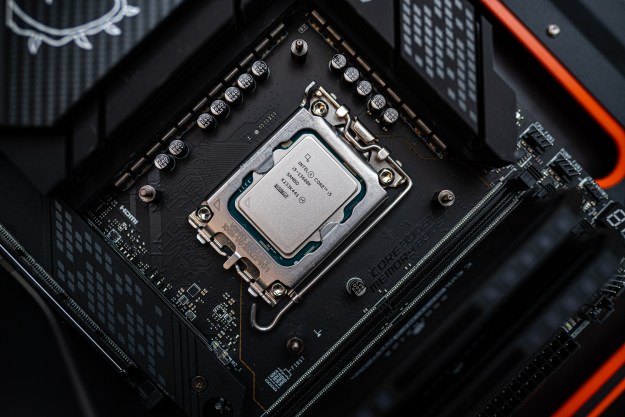Intel’s 11th-generation Rocket Lake desktop CPUs are Team Blue’s answer to AMD’s Zen 3 chips, and they appear to be an interesting bridge between technologies as Intel continues to iterate on its 14nm process. They are the follow-up to last year’s 10th-gen Comet Lake chips, which officially debuted in the spring.
All the final specs and features have been been officially dropped, including price and potential performance. All that’s left is to verify Intel’s claims with an independent review ourselves. But until then, here’s everything you need to know about Intel’s latest processors.
Availability and pricing

It seemed likely in the beginning that Intel would release Rocket Lake-S toward the end of 2020, which made sense according to the road maps sources had seen. Since then, the chips have been delayed into this year, with more information coming at CES 2021 in January.
But finally, we now have confirmation that Intel’s Rocket Lake processors will officially go on sale March 18.
Pricing information isn’t too surprising. The flagship configuration, the Core i9-11900K, is priced at $539. This is $40 more than the price of its predecessor, the Core i9-10900K, when it launched.
Of course, you’ll also be able to buy these 11th-gen chips in a variety of prebuilt systems. Dell’s G-series and Alienware desktops are some of the first to announce day-one upgrades to Intel’s latest processors.
Specs and architecture
Here’s the full rundown for the lineup of 11th-gen Rocket Lake chips, excluding only the Pentium and Celeron options.
| Cores/Threads | Graphics | Cache | Base clock | All-core turbo frequency | TDP | Price | |
| Intel Core i9-11900K | 8/16 | Intel UHD Graphics 750 | 16MB | 3.5GHz | Up to 4.7 | 125w | $539 |
| Intel Core i9-11900KF | 8/16 | 16MB | 3.5GHz | Up to 4.7 | 125w | $513 | |
| Intel Core i9-11900 | 8/16 | Intel UHD Graphics 750 | 16MB | 2.5GHz | Up to 4.6 | 65w | $439 |
| Intel Core i9-11900F | 8/16 | 16MB | 2.5GHz | Up to 4.6 | 65w | $422 | |
| Intel Core i9-11900T | 8/16 | Intel UHD Graphics 750 | 16MB | 1.5GHz | Up to 3.7 | 35w | $439 |
| Intel Core i7-11700K | 8/16 | Intel UHD Graphics 750 | 16MB | 3.6GHz | Up to 5.0GHz | 125w | $399 |
| Intel Core i7-11700KF | 8/16 | 16MB | 3.6GHz | Up to 5.0GHz | 125w | $374 | |
| Intel Core i7-11700 | 8/16 | Intel UHD Graphics 750 | 16MB | 2.5GHz | Up to 4.9GHz | 65w | $323 |
| Intel Core i7-11700F | 8/16 | 16MB | 2.5GHz | Up to 4.9GHz | 65w | $298 | |
| Intel Core i7-11700T | 8/16 | Intel UHD Graphics 750 | 16MB | 1.4GHz | Up to 4.6GHz | 35w | $323 |
| Intel Core i5-11600K | 6/12 | Intel UHD Graphics 750 | 12MB | 3.9GHz | Up to 4.9GHz | 125w | $262 |
| Intel Core i5-11600KF | 6/12 | 12MB | 3.9GHz | Up to 4.9GHz | 125w | $237 | |
| Intel Core i5-11600 | 6/12 | Intel UHD Graphics 750 | 12MB | 2.8GHz | Up to 4.8GHz | 65w | $213 |
| Intel Core i5-11600T | 6/12 | Intel UHD Graphics 750 | 12MB | 1.7GHz | Up to 4.1GHz | 35w | $213 |
| Intel Core i5-11500 | 6/12 | Intel UHD Graphics 750 | 12MB | 2.7GHz | Up to 4.6GHz | 65w | $192 |
| Intel Core i5-11500T | 6/12 | Intel UHD Graphics 750 | 12MB | 1.5GHz | Up to 3.9GHz | 35w | $192 |
| Intel Core i5-11400 | 6/12 | Intel UHD Graphics 750 | 12MB | 2.6GHz | Up to 4.4GHz | 65w | $182 |
| Intel Core i5-11400F | 6/12 | 12MB | 2.6GHz | Up to 4.4GHz | 65w | $157 | |
| Intel Core i5-11400T | 6/12 | Intel UHD Graphics 750 | 12MB | 1.3GHz | Up to 3.7GHz | 35w | $182 |
| Intel Core i3-10325 | 4/8 | Intel UHD Graphics 630 | 8MB | 3.9GHz | Up to 4.5 | 65w | $154 |
| Intel Core i3-10305 | 4/8 | Intel UHD Graphics 630 | 8MB | 3.8GHz | Up to 4.3 | 65w | $143 |
| Intel Core i3-10305T | 4/8 | Intel UHD Graphics 630 | 8MB | 3.0GHz | Up to 3.7 | 35w | $143 |
| Intel Core i3-10105 | 4/8 | Intel UHD Graphics 630 | 8MB | 3.7GHz | Up to 4.2 | 65w | $122 |
| Intel Core i3-10105F | 4/8 | 8MB | 3.7GHz | Up to 4.2 | 65w | $182 | |
| Intel Core i3-10105T | 4/8 | Intel UHD Graphics 630 | 8MB | 3.0GHz | Up to 3.6 | 35w | $97 |
Rocket Lake chips are, once again, based on Intel’s heavily revised 14-nanometer semiconductor manufacturing process. Intel has confirmed that these will be the final generation of the 14nm node, with the transition to 10nm on desktop happening later this year with 12th-gen Alder Lake.
In lieu of making that transition now, Intel has “backported” some of the most important features of its 10nm node to its new Cypress Cove core architecture. What types of features? Well, the primary ones are the improved Intel Xe graphics and the higher IPC (instructions per clock), which come directly from the 10nm Sunny Cove core. Most DIY enthusiasts won’t care too much about integrated graphics, but the higher IPC is key to what has made Intel’s 10nm chip successful on its mobile products.
There’s a downside, though. To keep frequencies high for desktop, Intel says it only had room on the die for a max of eight cores and 16 threads on its flagship Core i9-11900K. That’s two less than in its predecessor, the Core i9-10900K. The company has admitted that the reduced core count will mean slightly worse performance in multithreaded applications like Cinebench.

The Core i7-11700K may end up being a better entry point for gamers, a it still features a similar configuration for just $399. Thermal velocity boost appears to be the only feature missing from the Core i7 option.
As always, Intel has launched a huge lineup of 11th-gen chips, including overclockable options (K-series chips), those without integrated graphics (F-series), and small form factor configurations (T-series).
Importantly, Rocket Lake also includes 20 lanes of PCIe 4.0 for the first time and support for faster memory (DDR4-3200). This makes Intel more competitive with AMD, which currently offers 24 lanes of PCIe 4.0 in Ryzen 5000.
As was rumored, the Rocket Lake chips also feature a difference in cache size. Its L3 size has been reduced from 20MB to 16MB, while the L2 has been given a 50% boost up to 512KB.
Performance
Real-world performance has yet to be tested on the 11th-gen Rocket Lake processors, but between Intel’s claims and the leaked benchmarks, we can get a decent idea of performance.
In terms of gaming, Intel claims Rocket Lake makes gains between 3% and 11% over the AMD Ryzen 9 5900X, depending on the title. A 10% jump over the Ryzen chip in Total War: Three Kingdoms at 1080p High is an impressive gain, as is the 11% gain in Microsoft Flight Simulator.

In the past, Intel has also shared that the Core i7-11700K demonstrates faster game performance than the Ryzen 9 5900X. In Metro Exodus, Intel says its new chip performed about 10% better than the AMD’s offering. Intel didn’t elaborate on the specifics of the benchmark, though.
Outside of gaming, Intel also shared that thanks to the inclusion of DL (Deep Learning) Boost, Rocket Lake-S purportedly outperforms the Ryzen 9 5900X in video-editing performance by 35%. Intel also says the higher frequencies, meanwhile, lead to a 12% gain in performance in Microsoft Office over the previous generation.
Beyond what Intel has shared, the backporting and hybrid 14nm approach has led to a mix of predictions. At the low end, some forecasts say it could have only a 10% IPC improvement from Comet Lake, due mostly to the Willow Cove incorporation. During CES 2021, Intel boasted of IPC improvement over 10th-gen Intel processors of up to 19%.
Though Intel is expected to drive generational performance improvements with its Core i9-11900K processor, it’s unclear if the company’s flagship gaming CPU will command a consistent performance advantage over rival AMD’s latest offerings. An early Ashes of the Singularity benchmark posted on Twitter revealed that Intel’s unreleased silicon is capable of performing at 63 frames per second (fps) at 1440p resolution, which is about 11% slower than the AMD Ryzen 9 5950X’s 72 fps performance.
According to leaked GeekBench results, the Rocket Lake-S scored 1,645 points in a single-core test and 9,783 points in a multi-core test. This shows that Rocket Lake-S performs comparably to AMD’s Ryzen 5800X, according to Wccftech. The Ryzen processor scored 1,660 points and 10,400 points in GeekBench’s single-core and multi-core tests, respectively. In multi-core performance, Rocket Lake trails AMD’s silicon by approximately 6%.
While these benchmarks offer insight on how Rocket Lake will perform, we still don’t know exactly how Intel’s 11th-gen processors will fare in real-world applications.
As the last of AMD’s 14nm CPUs, Rocket Lake may not be a major upgrade over Comet Lake 10th-gen options, but it will need to offer something substantial if it hopes to compete with AMD’s Zen 3 chips, which are exceedingly capable. Similar to AMD’s recent announcements, it’s expected that Intel will focus on gaming improvements when it formally debuts Rocket Lake. However, when it comes to multithreaded workflows, AMD’s Ryzen processors could still command an advantage over Rocket Lake.
Overlocking enhancements
With Rocket Lake come a few new overclocking features that enthusiasts will enjoy. First, Intel has redesigned and updated its Extreme Tuning Utility, which was in desperate need of a face-lift.
All of the meatier overclocking enhancements are based around memory overclocking. For the first time, Intel says it has enabled real-time memory overclocking, which doesn’t require a system reboot to function. All of this is to take advantage of the new memory controller, which Intel claims will increase the average overclock, with frequencies reaching as high as 4,267MHz.
Lastly, memory overclocking will no longer be a premium, enthusiast-only feature, as it will now be featured in new B570 and H560 boards, in addition to Z-series motherboards. Each individual board will need to support the feature, but on Intel’s side, memory overclocking has been spread to the masses. Going backward, only Z-series motherboards will support memory overclocking 400-series boards.
Motherboard support
The Rocket Lake CPUs are compatible with H510, B560, H570, and Z590 motherboards. They’re also compatible with some 400-series boards, such as Z490 and H470.
What about Alder Lake?
Before you go out and buy a spiffy new Rocket Lake chip, don’t forget that Intel has something big coming just around the corner. Despite the fact that 12th-gen Alder Lake would be the second generation of Intel desktop chips to launch in 2021, they’re currently scheduled for release later this year.
Obviously, the final step to transitioning to 10nm isn’t one Intel wants to delay any further. Whether or not they’ll have been worth waiting for is still unknown. Either way, it’ll be the most important desktop launch for Intel in many years.
Editors' Recommendations
- Everything we know about Lunar Lake, Intel’s big next-generation chips
- It just became the perfect time to buy a last-gen Intel CPU
- The best processors in 2024: AMD and Intel CPUs duke it out
- Intel 14th-gen Meteor Lake: architecture, specs, and performance
- Everything you need to know about buying a power supply for your PC


